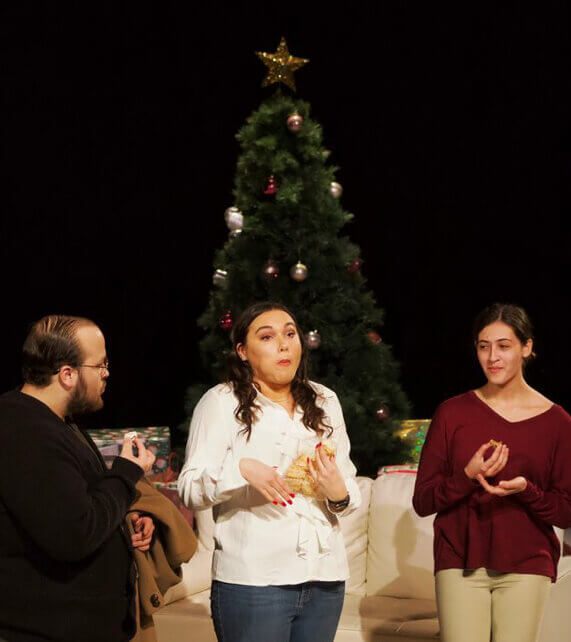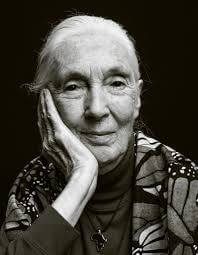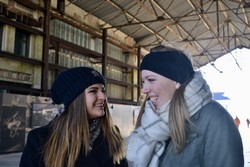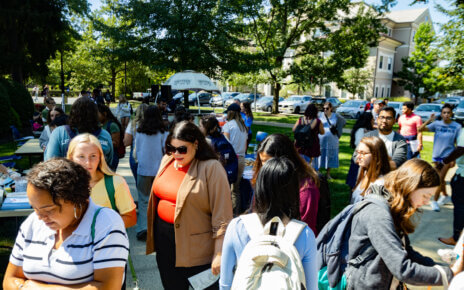We rarely stop to think about the process our clothes or food go through before they end up on our bodies or our plate. The thing we remember is the feeling of the fabric or the taste of the meal, and how much it costs.
The feeling is similar to watching a play. Most of us do not think about the history of the building or the work that is required to host a show.
The Guggenheim Foundation donated a carriage house to Monmouth College in 1961. Soon after the endowment of the carriage house, the building previously owned by Murry and Leonie Guggenheim, a horse shelter, became a Performing Arts Center in 1967.
Jerome Morley Larson, the architect who worked on the house, added a hexagonal theatre that would be used to teach and hold numerous shows annually. In 2007 the residence was renovated, moving from the gilded age carriage house center hall to a modern theater. The relic of the former carriage house is still visible through the brass horse stalls, which are now makeup booths.
Overtime, the theatre has had multiple names. In 1978 the theatre’s name was changed to Guggenheim Theatre to be later altered to Lauren K. Woods Theatre, the name of a former faculty member.
Before Lauren K. Woods died in 1995, Woods was an actor, faculty
member of Monmouth University who participated in over 250 commercials. Woods devoted his life to the Arts he directed, created, and performed in Monmouth University’s shows. Throughout his time at Monmouth, Woods produced over 100 theatrical events for the school. Today, Woods Theatre is home to multiple musicals and theater productions.
The Two River Theater in Red Bank inspired Woods Theatre architecture. The hexagonal shape of the theater is similar to the open-air Greek theatre. The main entrance leads to a foyer and sitting area. The theater’s centerpiece has a circular form that appears at the bottom of a hill where all performances occur. From the forestage, the seats push up in an arc shaped like the slope of a hill.
The recipe for a beautiful show is the actors and the crew managing the theatre on stage and in the background. The crew is responsible for many aspects, including but not limited to special effects, lighting, sound systems, props, building the set, and even moving the scenery. They prepare almost everything before the show and are passionate about their work.
Students join the Woods community for many reasons; it may be because they want to experience something different, but mostly because they love the theatrical world. Max McFadden, a sophomore psychology student and a light designer in Woods Theatre, advised prospective students who want to join the group: “Don’t be deterred by the initial complexity of the work.” Under the supervision of Carroll Rusty, Designer and Technical Director, the students are well trained and gain the confidence to operate the materials. Ultimately, it is all about the experience. Next time you attend a show in a theatre, remember to appreciate the things you would otherwise overlook.




